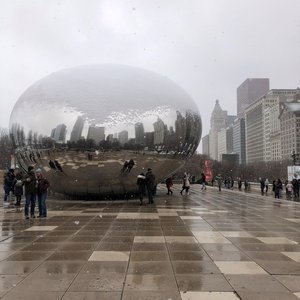The American Geophysical Union Fall Meeting 2022 (AGU22) is one of the largest worldwide conferences for geoscientists. After a couple of years attending virtual meetings only (for well-known reasons), AGU22 was the perfect opportunity for having live interaction again with scientists from all over the world. Besides, the AGU Fall Meeting is one of the few global prestigious conferences where the two main topics of my PhD (Seismology and Planetary Sciences) converge harmoniously, providing the chance to interact with leading scientists from each field.
In this occasion, I had the chance to present a poster entitled “Crustal Martian Structure from the analysis and inversion of large Marsquakes Rayleigh waves ellipticity”, with the preliminary results of the third part of my PhD project, aiming to constrain the structural characteristics of the Martian crust. I had interesting discussions with seismologists, planetary geologists, Mars enthusiasts but also scientists out of my PhD topic. After these fruitful discussions, these preliminary results were the base for my second PhD paper, published some months later in Geophysical Research Letters (GRL). Besides the presentations directly related to my PhD project, I also took the chance to attend sessions on and learn more about new techniques and approaches in seismology. These included, e.g., the use of Artificial Intelligence (AI) or Distributed Acoustic Sensing (DAS) using fiber-optic cables, which I am planning to explore and include in my future research after finishing my PhD.
The days in Chicago were snowy, cloudy and slightly cold (for Chilean standards), but it was great to meet again some good-old friends from Chile, other collaborators from the InSight mission (in which my PhD work is framed) and new potential collaborators. For all this, attending AGU22 was definitively an important milestone on my way to becoming a well-trained scientist and, thus, I am deeply grateful to the GSGS for the travel grant awarded and for such a great opportunity!
Sebastian Carrasco
PhD student
Bensberg Earthquake Observatory, Institute of Geology and Mineralogy
PhD project: “Multi-scale investigation of the subsurface structure at the InSight landing site, on Mars, using single-station seismology”
Poster title: “Crustal Martian Structure from the analysis and inversion of large Marsquakes Rayleigh waves ellipticity"
